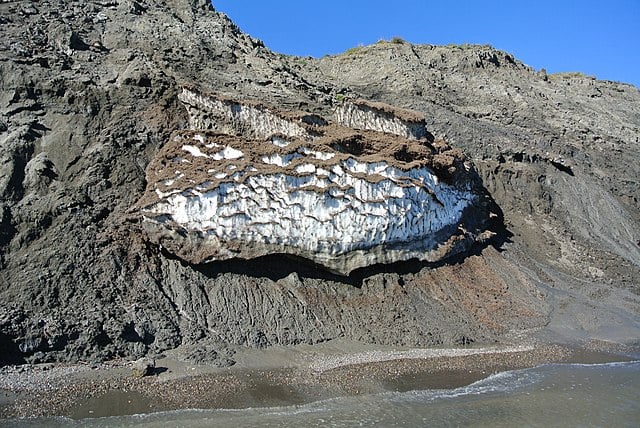
The Arctic’s permafrost, a frozen layer of soil, is melting due to rising temperatures, potentially awakening viruses dormant for millennia.
Experts caution that the threat, although minimal, is being underestimated. Thawing could also release hazardous waste from the Cold War era, damaging ecosystems and endangering wildlife.
According to climate scientist Kimberley Miner from NASA Jet Propulsion Laboratory at the California Institute of Technology, the permafrost situation is worrisome. It highlights the need to keep the frozen layer intact as much as possible.
Permafrost acts as a ‘time capsule’
Permafrost, which covers 20% of the Northern Hemisphere, has sustained the Arctic’s tundra and boreal forests for centuries. It acts as a time capsule, safeguarding not only prehistoric viruses but also preserved remains of extinct creatures, such as woolly rhinos and cave lion cubs, that scientists have recently been able to examine.
Permafrost is an ideal storage medium because it lacks oxygen and sunlight. However, according to Nature, Arctic temperatures are rising up to four times faster than global averages, causing the top layer to weaken.
Jean-Michel Claverie, a retired professor of medicine and genomics at Aix-Marseille University School of Medicine in Marseille, France, is researching the hazards associated with frozen viruses.
He analyzed earth samples collected from Siberian permafrost to detect whether any viruses were still active. He is specifically investigating “zombie viruses” and has discovered some.
Revival of viruses as old as 48,500 years
#REPORT: Scientists have revived a 'Zombie' virus that spent 48,500 years frozen in permafrost. pic.twitter.com/28VGC29LMB
— Canadawavetv (@canadawavetv) March 8, 2023
In 2014, Jean-Michel Claverie and his team successfully reanimated a virus from permafrost that had been dormant for 30,000 years by introducing it into cultured cells. He studied a virus that only targeted single-celled amoebas as a safety measure.
He repeated the experiment in 2015 with a different virus type. In his latest research, published on February 18 in Viruses, Claverie and his team isolated several strains of ancient viruses from seven different locations in Siberian permafrost.
Each strain infected cultured amoeba cells. The latest strains belonged to five new virus families in addition to the two he had revived previously.
The oldest virus was nearly 48,500 years old, while the youngest was 27,000 years old. Claverie and his team discovered the youngest virus in a woolly mammoth’s remains.
🚨🇷🇺Just in: Scientists managed to unearth the oldest known virus on Earth, having recovered the 48,500-year-old virus from the Russian permafrost, according to a recent study. #Pandoravirus #Yedoma, pic.twitter.com/O7QuYysv1B
— Terror Alarm (@Terror_Alarm) November 29, 2022
A threat to public health
According to Jean-Michel Claverie, the fact that viruses that infect amoebas remain infectious after being frozen for so long could indicate a significant problem.
Claverie is concerned that people view his research as a scientific oddity and don’t take the possibility of ancient viruses returning to life as a genuine public health threat.
He believes that the viruses that infect amoebas are stand-ins for all other viruses that may be in the permafrost.
“We see the traces of many, many, many other viruses,” he said. “So we know they are there. We don’t know for sure that they are still alive. But our reasoning is that if the amoeba viruses are still alive, there is no reason why the other viruses will not be still alive and capable of infecting their own hosts,” he told CNN.
See all the latest news from Greece and the world at Greekreporter.com. Contact our newsroom to report an update or send your story, photos and videos. Follow GR on Google News and subscribe here to our daily email!



